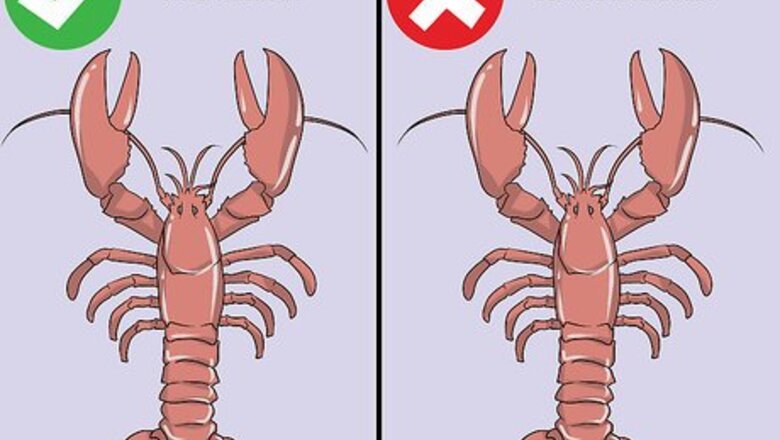
views
Choosing Fresh Lobster
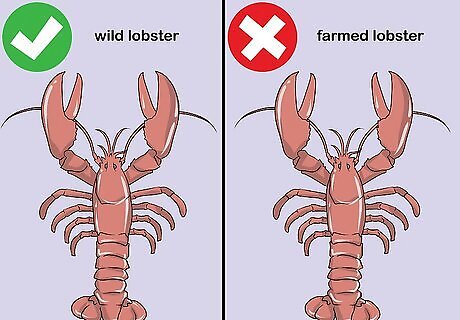
Choose wild lobster rather than farmed lobster. A live, healthy lobster will taste best and will be least likely to cause food poisoning. Ask your supermarket employees how long ago your lobster was caught and whether your lobster is wild or farmed. Purchase a lobster that was caught within the past several weeks in an ocean, not a shellfish farm. Wild lobsters are fresher and usually healthier than farmed lobsters.
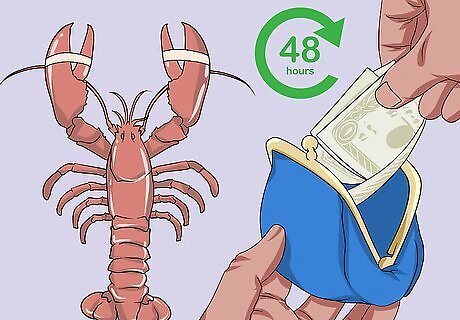
Purchase your lobster 48 hours or less before you plan to cook it. Lobsters generally last between 36-48 hours after purchase. Any longer and you risk them dying before you have a chance to cook them. Discard lobsters that die before you're ready to cook them. Shellfish must be cooked immediately after death to avoid food poisoning.
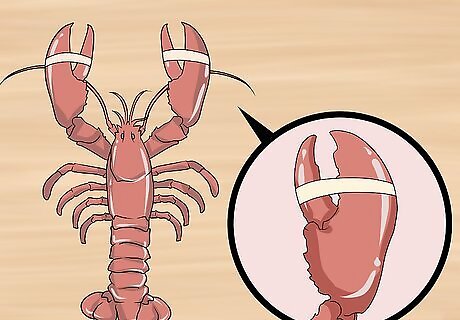
Leave the rubber bands on their claws. After you purchase your lobster, avoid taking off the rubber bands until after your lobster has been cooked. Taking them off early will make storing them more difficult and put you at risk for getting pinched. Keeping the rubber bands on while you cook the lobsters will not change or detract from their taste.
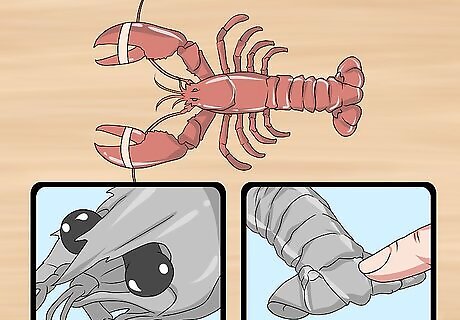
Check your lobsters for signs of life in its eyes and tail. Unless your lobster is close to death, it should respond to touch. To test more motionless lobsters, poke the lobster's eye and watch for movement. If you're a little squeamish about touching its eyes, touch its tail. If your lobster is alive, its tail should curl back. Live lobsters do not have a noticeable odor. If your lobster is still, doesn't respond to signs of life, and smells fishy, throw it out.
Keeping Live Lobster in Your Fridge
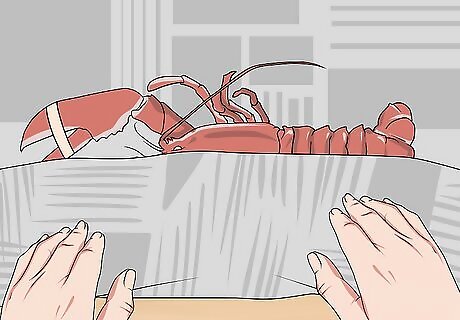
Wrap the lobster in newspaper dampened with saltwater. Wrap your lobster in a few layers of cool, damp—not dripping wet—newspaper. Cool water will keep your lobster's metabolism low so they remain docile and sluggish. Dry lobsters are more likely to die before you're ready to prepare them. Use saltwater to dampen the newspapers. Tap water can kill your lobster.
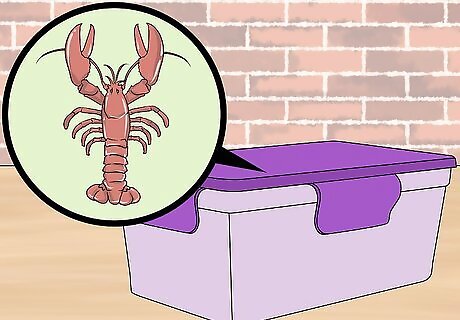
Put your lobster in a bag or container with an ice pack. Containers with a simple opening, like a cooler or a cardboard box, work well for storing lobsters. Store 1 or 2 lobsters in the container at a time to avoid contention between your lobsters. The colder your lobster is, the less it will move. If you do not use a cooler to store your lobster, add in at least 1 or 2 ice packs.
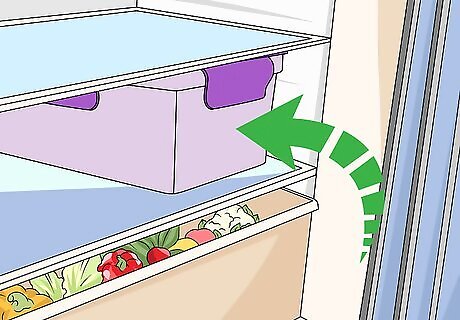
Place the container in your fridge. Make enough room for your lobster's container and slide it carefully into the fridge. If possible, put it in the darkest or coolest corner of the fridge to keep your lobster's metabolism down. Lobsters with a low metabolism move and struggle less.
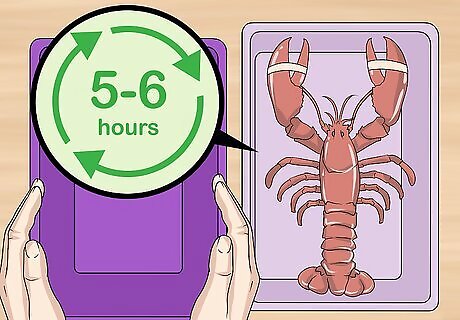
Check on your lobster every 5-6 hours. Set a timer for 5-6 hours and, when the timer goes off, remove your lobster from the container to check its newspaper wrapping. If the newspaper is dry or warm, change the newspapers for new, damp wrapping.
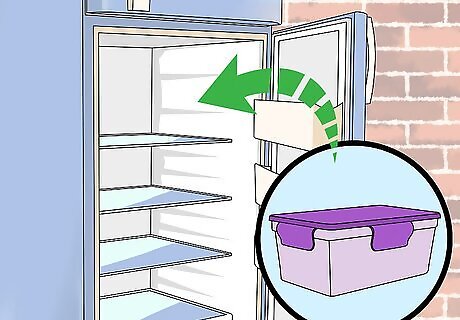
Leave your lobster in the fridge until you're ready to cook it. Do not keep your lobster out on the counter for any longer than a few minutes. Storing your lobster at room temperature can dry out your lobster's wrapping and cause premature death.
Storing Live Lobster in a Saltwater Tank
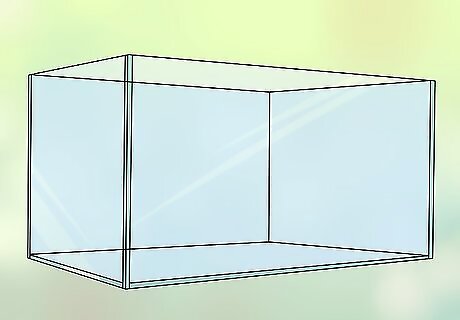
Purchase a fish tank with a built-in filtration system. Go to an aquarium store and talk with the employees to find a tank suitable for lobsters. Be sure to choose a tank that has the following features: a built-in filtration system, temperature control, and breakage-resistant glass. Do not store lobsters in your sink or bathtub. Your lobster's tank will need saltwater and a filtration system to keep them alive.
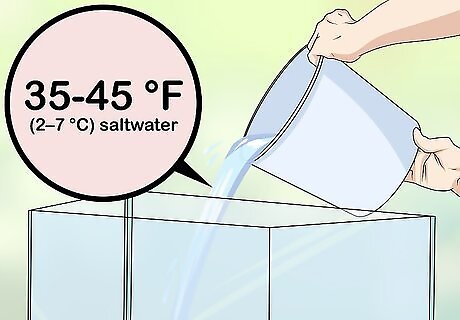
Fill the tank with 35–45 °F (2–7 °C) saltwater. Lobsters need saltwater to survive and putting them in freshwater tanks can kill them. Fill the tank with saltwater with a temperature of 35–45 °F (2–7 °C). The colder your lobster is, the slower its metabolism will be and the more placid it will become. If you're storing multiple lobsters in the same tank, cold water can prevent lobsters from fighting each other or breaking the glass.
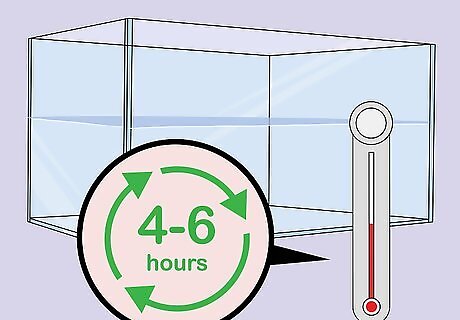
Measure your tank's water temperature every 4-6 hours. Use a thermometer made for aquariums or check your fish tank's built-in thermometer. Your water temperature should hover around 35–45 °F (2–7 °C). If it falls above or below that, consult your tank's manual. It should contain instructions on adjusting the temperature—if not, contact the store where you bought the aquarium. If you cannot change the tank's water temperature after about 15-20 minutes, transfer your lobsters to the fridge as you continue working on the tank.
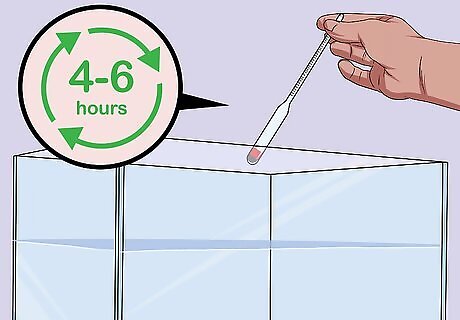
Check your fish tank's salinity every 4-6 hours with a hydrometer. The fish tank's salinity should be of 32 parts per thousand. If your tank monitors readings above or below those ranges, move your lobsters to the fridge and check your tank's manual for maintenance. Hydrometers can be purchased at most aquarium stores.



















Comments
0 comment